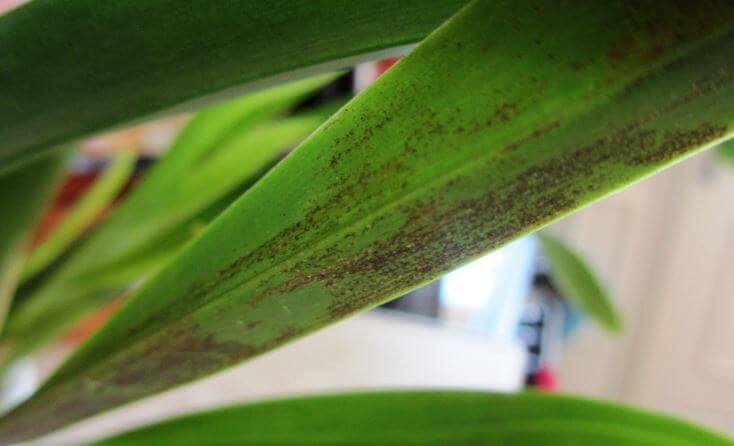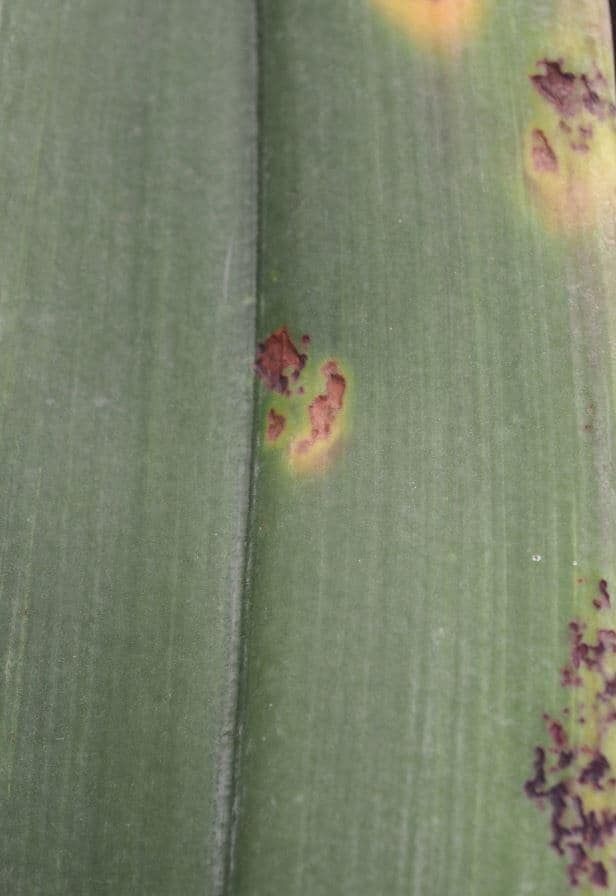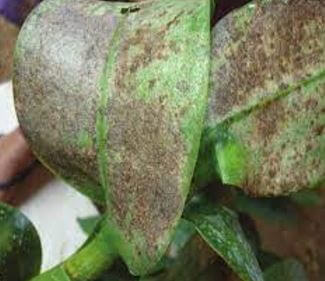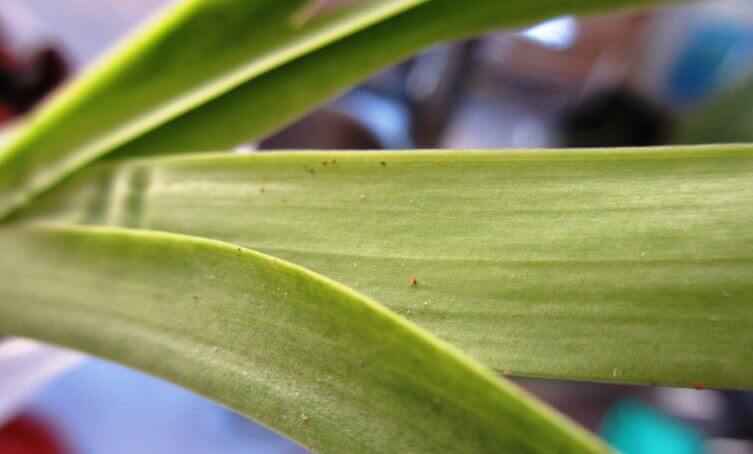Last Updated on September 9, 2023 by a Friendly Gardener
One of the more common pests that infest houseplants is the spider mite, and if your indoor garden includes orchids, these spectacular epiphytes are no exception. Spider mites love them. There are two varieties of orchid mites that usually will attack these flowering beauties:
- The flat spider mite is commonly found in tropical climates, known as the Brevipalpus Californicus. This mite is impossible to observe s it will lay flat against foliage and moves very slowly. Silvery damage on foliage will eventually appear brown and sunken.
- The two-spotted spider mite typical to North America This spider mite is also called the Red Spider mite or Tetranychusurticae. They have eight legs and no wings with a yellowish-green body. A dark spot adorns each side of the insect’s body. The red spider mite will feed on the chlorophyll sap of foliage by sucking it from the leaf undersides. They target thinner foliage and new growth.
Another mite to be on the lookout for is the Phalaenopsis mite which qualifies as a false spider mite. Scientifically named the Tenuipalus Pacificus, this mite will not spin a web. It can be found in Florida and California as well as in Europe and Panama. An infestation of this false spider mite will create dark patches and spots on foliage and will lead to tissue death.
The unfortunate thing about spider mites is that they are so microscopic that even if you recognize them, they are generally not visible to the naked eye. You know your plant has been infested when there is significant damage apparent. The sap-sucking of chlorophyll leads to blanching and leaves exhibiting a silvery appearance. Affected flowers may look bruised. These pests can also carry diseases.
Signs of Orchid Spider Mites: How Do I Know They Are Present on My Plant?

Spider mites prefer and proliferate in dry, hot environments. This means that if you have placed your plants on a sunny windowsill, optimal conditions for a spider mite infestation are present.
Orchids will demonstrate a somewhat silvery appearance or shine on foliage undersides which is a telltale sign of a loss of sap. You can also wipe leaves on both sides with a tissue or white cloth. If your plant has been infested or eggs have been deposited, brown or reddish streaks will appear on your tissue.
You can also place a tissue under foliage and tap it. If particles appear to move, your plant is most likely infested. You may want to use a magnifying glass as these insects are so minuscule. You may also notice webbing, particularly on leaf undersides.
If you suspect spider mites or any pest on your plant, isolate it from other indoor plants to prevent the infestation from spreading to any other houseplants you may be cultivating.
How to Prevent Mites on Orchids

The best way to prevent any houseplant infestation regardless of the plant or the pest is to keep plants healthy. Pests will have more difficulty in debilitating a healthy specimen. Make sure to feed your orchid with a fertilizer formulated for orchids to boost the plant’s immune system through nutrition. Make sure your plant has an adequate amount of sunlight.
The best tool against a spider mite infestation is humidity. If you can raise the humidity in the location where you are cultivating your orchids, there will be less possibility of a spider mite attack. Mites appear to attack plants in heated homes or even heated greenhouses where the environmental air will be drier.
Experts also recommend dusting orchid foliage weekly with a damp cloth to prevent spider mite infestations.
How to Get Rid of Spider Mites on Orchids

Orchids that show very little damage will not require extra care, but plants with significant damage will need extra help in regaining health. If your orchid plant shows signs of spider mite infestation, follow these tips to rid your plant of the pests:
- Heavily infested or damaged foliage should be removed.
- Clean your plant using a blend of water and rubbing alcohol to kill pests and remove them from the plant. Water and gentle dish soap can also be used.
- Stir one cup of alcohol in 30 ounces of water. Pour the mixture into a spray bottle and spray foliage thoroughly on both sides and then dry the leaves using a soft cloth or paper towel.
It’s worth noting that many chemical commercial insecticides may not have much of an effect on a spider mite infestation. Manufacturers do however produce miticides and acaricides that target mite control. You can also try to treat your plant with insecticidal soap or organic Neem oil which is a natural treatment to kill these pests. Avoid changes to the growing environment as well as repotting or transplanting.
You will need to apply whichever solution you opt for weekly until all signs of spider mite infestation have disappeared.
Are Spider Mite Infestations Fatal to Orchids?

Spider mites generally ruin the plant’s aesthetic value in indoor décor. However, if an infestation is left untreated, the plant will eventually become so severely damaged, that it is impossible to save. Your orchid may stop growing and leaf tissue may begin to die. The earlier you catch an infestation, the more possibility there will be of saving your orchid.
How Spider Mites Arrive and Other Considerations

Apart from the damage that these pests can wreak on your orchid, they will place all your houseplants at risk. Some plants will resist better than others such as Jade plants, Snake plants, and ZZ plants. Rubber plants, thanks to their large foliage make signs of infestations easier to spot.
Spider mites can enter your indoor garden easily thanks to their microscopic size. They can arrive indoors on pet fur, thanks to a breeze or the wind, or on a new plant, you bring home. Higher humidity levels will go a long way in aiding prevention.

